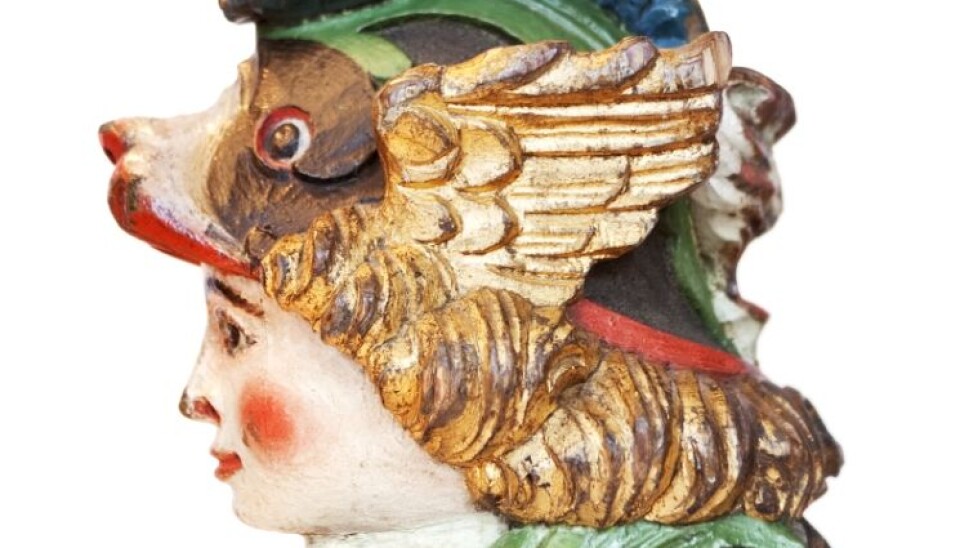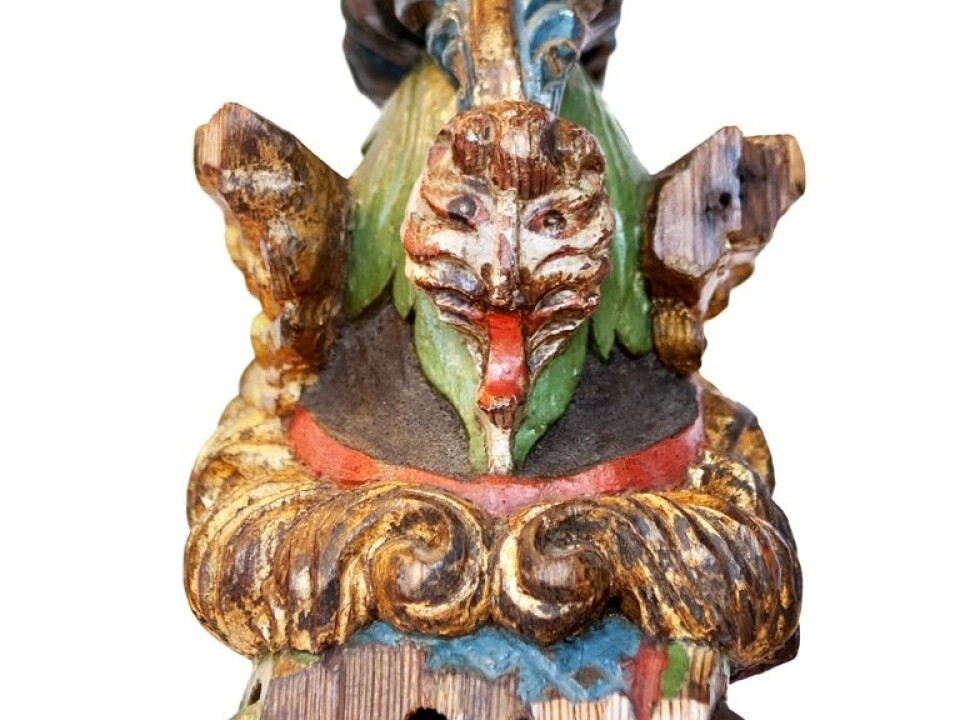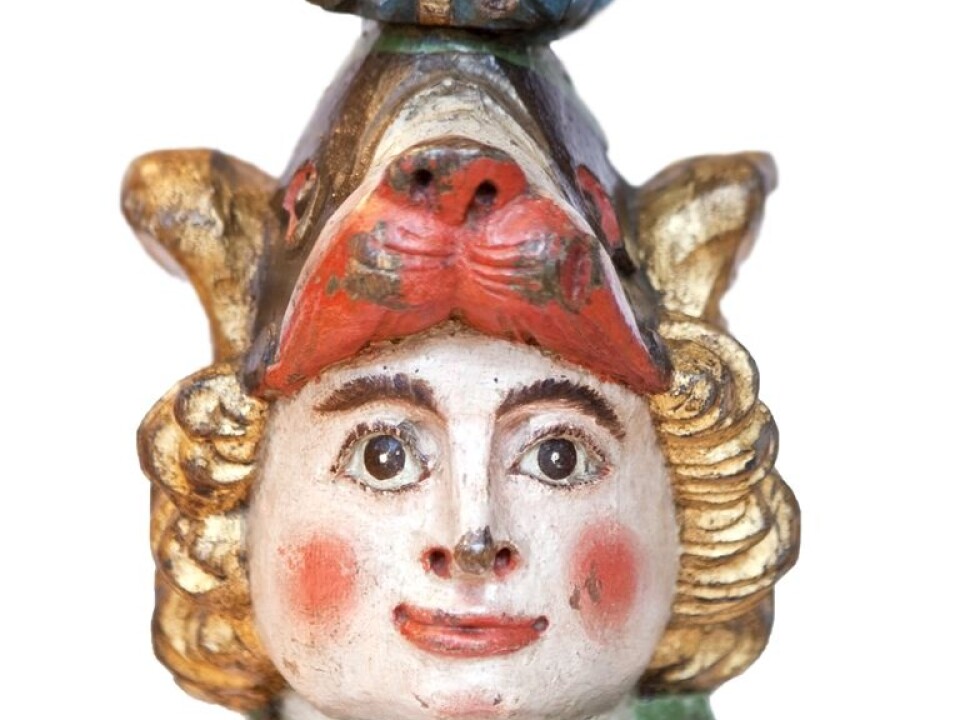
Old ship art examined
Curator Anne Tove Austbø welcomes assistance in interpreting a puzzling rudder ornament.
Denne artikkelen er over ti år gammel og kan inneholde utdatert informasjon.
“Jan Hendrich Lexow, who was the curator here for several decades, found the figure hanging among the museum’s collection of church items. He understood that it had been misinterpreted and removed it from the collection,” says the curator of the Stavanger Maritime Museum, Anne Tove Austbø.
The object she’s talking about is a rudder head that was most probably made in the 1700s. These were mounted at the very stern of sailing ships, as ornamentation of the rudders that steered the ships.
The figure is of a boy’s head wearing a helmet shaped like the snout of a dog. On its reverse side is a repelling and smaller head sticking its tongue out at the wake of the ship.
“The fun thing about this head is all its symbolism. Frightening heads have adorned ships for ages. Consider for instance Viking ships,” says Austbø.

“The rudder head is also decorated with the helmet wings of Mercury. Mercury was the Roman god associated with travel and success, so this was not an odd choice for a merchant ship,” she explains.
Very few rudder heads
How the little boy’s head ended up in the church collection is a mystery, but in the first half of the 1900s Stavanger city had several maritime scrap yards. Austbo suggests that it might have been saved from destruction at one of these.
“But it shows that woodcarvers and master carpenters in the 18th century were not limited to a single genre. They could carve ornaments for churches one day and for boats the next,” she says.

Judging from the size and style of the rudder head, she and her colleagues think it was mounted on a small Dutch merchant ship.
“These rudder heads were more common in the Netherlands than in Norway, and it was an easy voyage from there to the Norwegian West Coast,” she says.
Stern art prior to figureheads
Whereas figureheads became popular on the bows of streamlined sailing ships in the 1800s, Austbo points out that rudder heads have a longer and lesser known history.

In addition a lot of them share common characteristics.
“Dog’s heads and ostrich feathers are common motifs, and this can be traced back to the ideals of antiquity,” she says.
“This rudder head is carved in oak, and typically a shipowner would simply buy one that fitted the vessel. We are now trying to find out more in Dutch and international literature. But is anyone recognizes the symbolism in rudder heads like this, we are appreciative of any help,” says Austbø.
Enormous aft decorations
Norwegian rudder heads were mostly found on North Norwegian fishing boats, known as nordlandssjekter, and Austbø says that the Tromsø Museum has the biggest collection of them. The Norwegian Maritime Museum has a couple but the Stavanger Maritime Museum has only this one.
“Rudder heads could be much bigger. The large North European ships of the 1600s had tall afts with room for enormous decorations. A good example is the Swedish Vasa Ship,” says Austbø.
“These have been described as the altarpieces of ships, almost like what you see in large church decorations,” she says.
Why do like this particular object so much?
“It’s beautiful and somewhat foreign for us here at the Stavanger Maritime Museum. We have lots of ship drawings and more mundane items from maritime traditions in our collections. We work a lot with local coastal culture and vessels. This is more exotic,” says Austbø.
“We can link this object to the general history dealing with the art of woodcarving and the development of carpenters’ guilds. I see this in contexts covering seveal disciplines,” she says.
The Stavanger Maritime Museum is currently running a special campaign stressing various treasures from their collections. Austbø wants to create an exhibition of ship ornamentations that focuses on items in a multidisciplinary light.
“I’m selecting this object because we don’t know so much about it – it can be fun giving extra attention to things you don’t have all the answers to,” says Austbø.
---------------------------------
Read this article in Norwegian at forskning.no
Translated by: Glenn Ostling






























